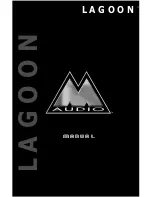
Video controller 31
Acquisition interface
The acquisition interface receives the grabbed images from the decoder and the
deserializer as a stream of digital pixels in 20-bit YCbCr pixel format. The video
controller can route grabbed images directly to the display (bypass/ low-latency
mode), store them in on-board memory, or perform both operations
simultaneously. The internal data paths preserve the full pixel resolution.
Display interface
The video controller feeds the encoder and/or serializer with a stream of digital
pixels in 20-bit YCbCr pixel format. The encoder and/or serializer reconvert the
digitized video and transfer the video signal to an auxiliary display. Digital
acquisition images can be sent to either the digital display interface or to the analog
display interface. Although analog acquisition images captured using ITU-601
digitization can be sent to either the analog display interface and/or the digital
display interface, images captured using square pixel digitization can only be sent
to the analog display interface. You can have simultaneous analog and digital
display, however both outputs will display the same video signal.
Note that the video controller does not implement resolution conversion and will
display images at the same frame rate as they were acquired. It also does not support
display of progressive images if the acquisition was interlaced nor does it support
the display of interlaced images if the acquisition was progressive.
Memory interface
The video controller is interfaced to 128 Mbytes of linearly addressable
DDR SDRAM, having a bandwidth of up to 100 MHz (1.6 Gbytes/sec) and a
64-bit data bus. The on-board memory is responsible for the storage of acquisition
video data, overlay images, and static images transferred from the Host.
Using the PCI-X interface, Matrox Vio Duo can access Host DMA memory
(physically contiguous, non-paged memory). An advantage of DMA memory is
that a bus mastering device (such as Matrox Vio Duo) can access this memory
without Host intervention.
Overlay composer
The overlay composer overlays image(s) onto image data. Overlay images are
stored in local memory in a 32-bit color format (BGR32 packed), however the
overlay composer converts each overlay pixel to YCbCr 30-bit pixel format before
combining it with the underlay image. The overlay image pixels replace the
original pixels in the image based on a specific keying color. Pixels of the overlay
Summary of Contents for Vio
Page 2: ...Matrox Vio Installation and Hardware Reference Manual no Y10995 101 0102 January 3 2013...
Page 7: ......
Page 25: ...24 Chapter 2 Hardware Installation...
Page 52: ...Appendix C Appendix C Listing of Matrox Vio boards...
Page 58: ...Limited Warranty Refer to the warranty statement that came with your product...
Page 59: ......
















































